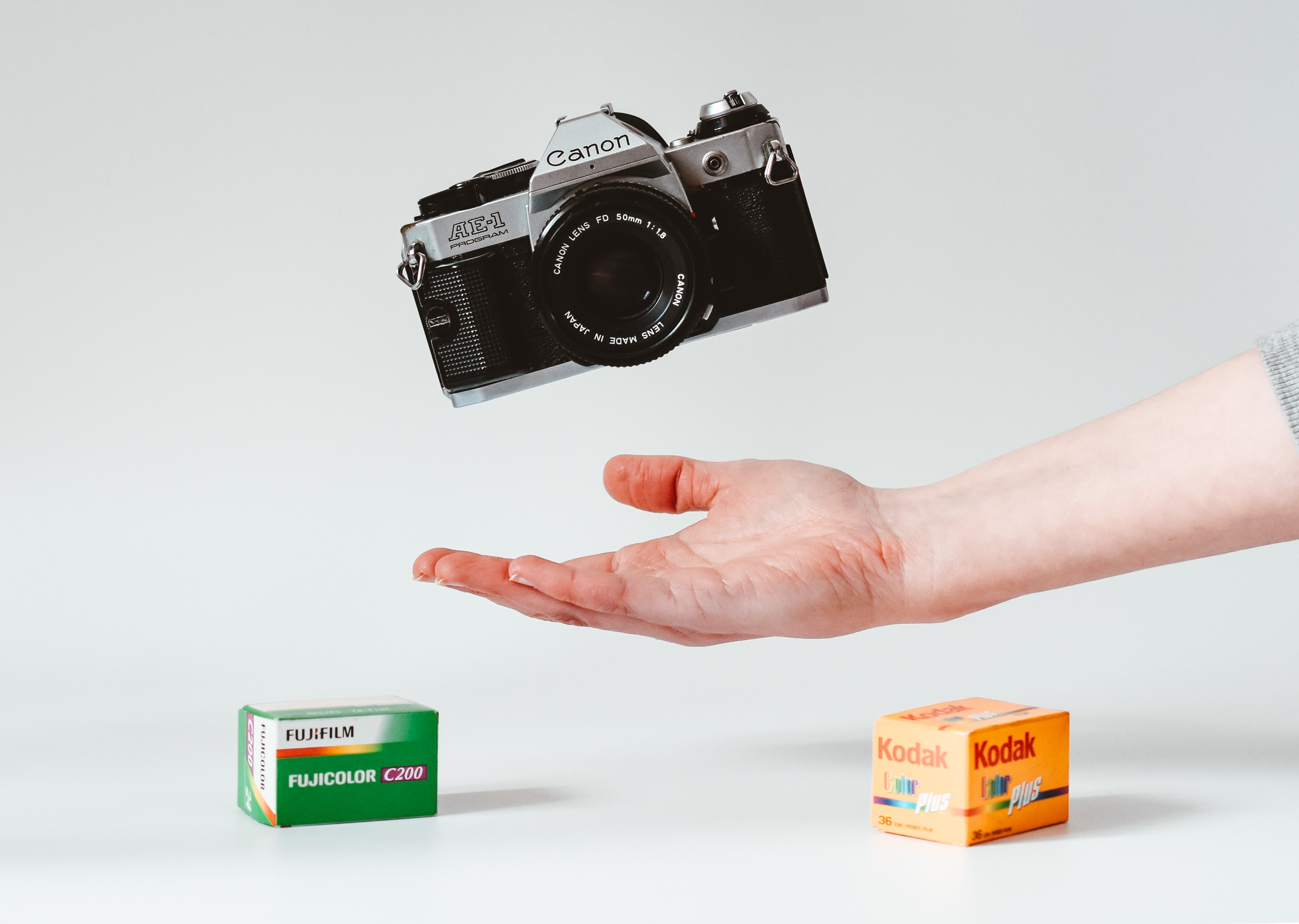It’s time to answer the question that photographers, videographers and audiovisual content creators have been asking since the mirrorless system first debuted: is mirrorless the future of digital image-making? We would actually argue that, in this case, the future is already here, and mirrorless cameras are the present day pinnacle for both stills and motion image creators. Let’s unpack this statement with our top 10 reasons why you should consider switching to the mirrorless system, right now.
If you would like an explanation of how the mirrorless system works, you can check out this video on our YouTube channel that breaks down the key differences between DSLR and mirrorless cameras, and if you are considering whether rocking it old-school with the analogue life is more your speed, you can take this quiz on Orms Connect to determine if your photographic style is suited to film photography.
1. THE ELECTRONIC VIEWFINDER ADVANTAGE
We’re putting this one at the top of our list because it is undoubtedly the primary benefit of the mirrorless camera system. One of the frustrations with the DSLR system — especially for newer photographers — is getting used to anticipating how your image is going to come out based purely on the exposure settings you’ve chosen for capturing your scene. Will it be too underexposed? Too overexposed? Who knows!
Thanks to the electronic viewfinder (EVF), you as the image-maker can see exactly what the camera sees based on how you have set your aperture, ISO and shutter speed. No more guesswork required: what you see through the viewfinder is exactly how your image will look! The EVF also picks up any barrel distortion you’ll experience when shooting on wide lenses, and it even allows you to get a clear preview of your scene when shooting in pitch darkness, which simply isn’t possible on a DSLR. All these advantages come together to produce an easier, more efficient and significantly faster shooting experience that will appeal to first-time digital photographers and experienced image-makers alike.
Discover the Sony Alpha a7S III.
2. UNMATCHED AUTOFOCUS PERFORMANCE
Gone are the days when mirrorless cameras had to rely on clunky contrast detect autofocus to help you get the shot! In recent years, the manufacturers of mirrorless cameras were able to figure out how to get a hybrid of the accurate contrast detect and rapid phase detect AF systems to operate on the actual sensor of the unit. This results in autofocus that is both snappier and sharper than what a DSLR can produce.
This isn’t where the superiority of mirrorless autofocus ends, however. Because the image you are seeing is projected directly onto the digital sensor, the camera’s processor is able to manipulate that information and argument what the autofocus system is capable of doing. In simple terms, you get autofocus that can swiftly and accurately track subjects, faces and even eyes, eliminating any need to worry about whether your subject will be in focus or not. In the most modern models, this system includes the tracking of subjects other than humans — think domestic animals and birdlife — and when combined with powerful deep learning algorithms as seen in Canon’s high-end EOS R range, the results are impossible for DSLRs to match.
3. TRAVEL LIGHT
By this stage, this is a well documented fact: mirrorless cameras are significantly smaller and lighter than DSLRs. This is due to DSLRs requiring a mirror and pentaprism in order for the viewfinder to function. Without this additional internal components, mirrorless cameras are able to be far more compact than their older and chunkier counterparts. Possible advantages of this include being able to comfortably shoot for longer, and increased portability for those who frequently travel with their cameras. For those who prefer the heftier bodies of a classic DSLR, there even are bulkier mirrorless cameras that deliver similar ergonomic functionality, such as the Canon R5 and even the newer Sony Alpha bodies.
4. SHOOT FASTER BURSTS
Sport, action and wildlife photographers, listen up! When shooting bursts in electronic mode (i.e. with no intervention from a shutter mechanism), mirrorless cameras can achieve unparalleled burst rates, uniquely suited to capturing fast-moving subjects such as athletes, cars, wild animals, and birds in flight. With the latest in mirrorless technology — as seen in the Canon EOS R3 at the time of publication — this can be as fast as 30 frames per second, in RAW. There is no DSLR on the market that can match this blistering pace.
5. SUPERIOR VIDEO CAPABILITIES
If you want to be on the cutting edge of what is possible with modern video production, mirrorless is where it’s at. Everything that is mission-critical for video creators — rock-solid sensor-shift IBIS, the ability to shoot log, unbeatable autofocus, and superior and more versatile recording formats — is delivered in even some of the more “pro-sumer” and entry-level mirrorless cameras. When you consider the added benefits provided by the more compact size and lighter weight of the smaller bodies, such as increased and easier mounting options on the likes of gimbals, there really is no reason to not consider a mirrorless machine if you are a videographer in need of industry-leading performance.
Discover the Blackmagic Design Pocket Cinema Camera 6K Pro.
6. CLEANER, CRISPER IMAGES
The reason for the above is twofold. Firstly, there is an inverse relationship with the distance between the rear element of the lens and the camera’s sensor, referred to as the flange distance: the shorter the distance, the better the image quality. Due to the absence of the internal chamber needed for the mirror (as seen in DSLRs), this is something that mirrorless cameras are able to accomplish effortlessly. Secondly, as a follow-on from this point, manufacturers of mirrorless lenses are now able to design and produce more efficient optics. Less glass = less colour and image distortion. Additionally, when you consider that many of the higher end mirrorless cameras possess sensors in excess of 40 megapixels, it makes sense that the image quality is certainly superior to what a DSLR is capable of.
7. GET THE SHOT WITHOUT DISTURBING THE SCENE
One of the additional benefits that comes with the aforementioned compact size of mirrorless bodies is inconspicuousness. Combining this characteristic with their ability to shoot completely silently thanks to the electronic shutter, mirrorless cameras are uniquely suited to shooting scenarios where discretion and effective invisibility are a must (think documentary work, street photography, and stills shooting on film sets).
8. GO BEYOND FULL-FRAME
Need even more megapixels and frames that go beyond uncropped 35mm? Mirrorless is the answer, especially if you want to get more for less. With mirrorless cameras such as the Fujifilm GFX 100S, you can have access to up to 100 megapixel sensors and medium format frame sizes, at comparatively affordable price points when the only other alternatives are your Hasselblads and Phase Ones. This is another area where DSLR technology simply cannot compete.
Discover the Fujifilm GFX 100S.
9. PREVIEW YOUR EFFECTS
Is mirrorless the future? Perhaps the fact that you can preview your visual effects in-camera provides some kind of answer. Traditionally with a DSLR, you would have had to shoot your images in RAW and apply any colour filters manually in your post processing workflow. Mirrorless cameras, however, allow you to preview any in-camera filters and effects straight through the EVF or on the LCD screen. Moreover, you can shoot with the effect applied in JPEG format, while still retaining the unprocessed duplicate images in RAW, giving you freedom to re-edit them in post. We haven’t even mentioned other preview-related benefits of mirrorless cameras, such as live histograms, focus peaking, and zebra for monitoring overexposure, which largely are not available when shooting on a DSLR.
10. FUTURE PROOF YOUR CREATIVITY
At the end of the day, if you have the means to go mirrorless, this should be your primary motivating factor. Are DSLRs still relevant in the present context? Yes. Is mirrorless the future? Also yes, and they have unquantifiable advantages and benefits in the current time too. The simple fact of the matter is that, while they may still continue being manufactured for many years to come, the remaining benefits of the DSLR system will be eroded with every new mirrorless release. Eventually, shooting on a DSLR may even become a slight inconvenience, the same way that being a film photographer in today’s era has become. When you also take into account the innumerable advantages you gain from the current generation of mirrorless cameras — the EVF, the superior AF, the travel-friendly size, greater burst speeds, unbeatable video performance, just to list a few — there really is no reason to not go mirrorless today.








